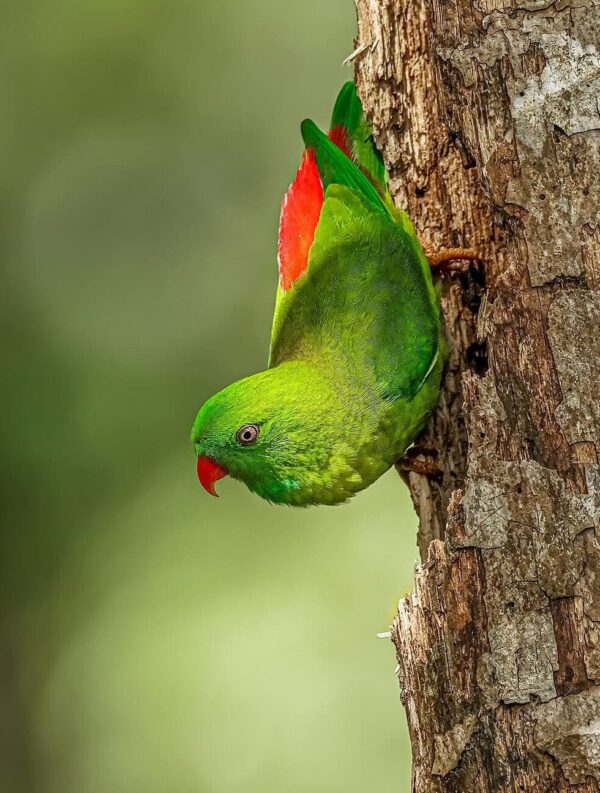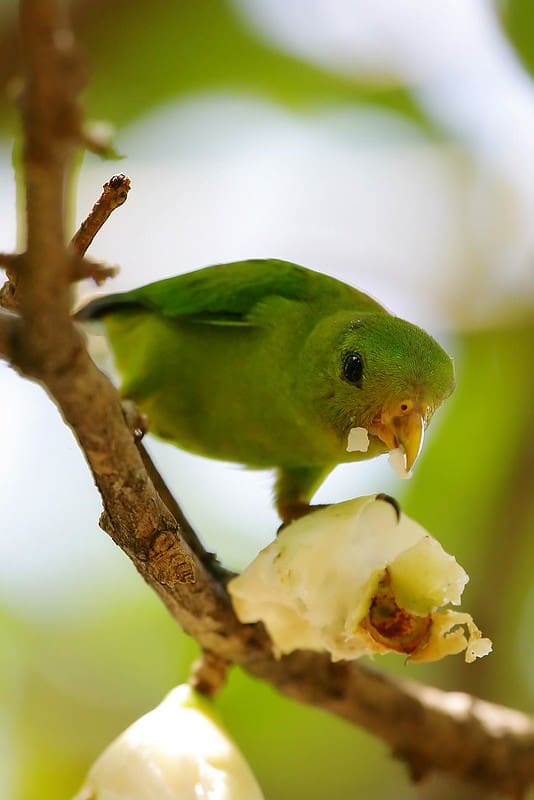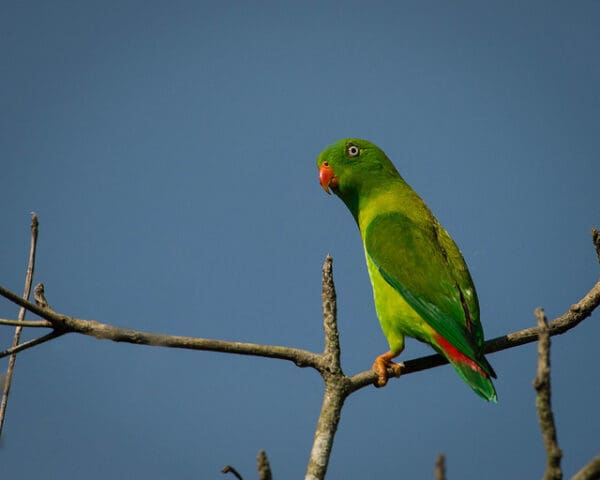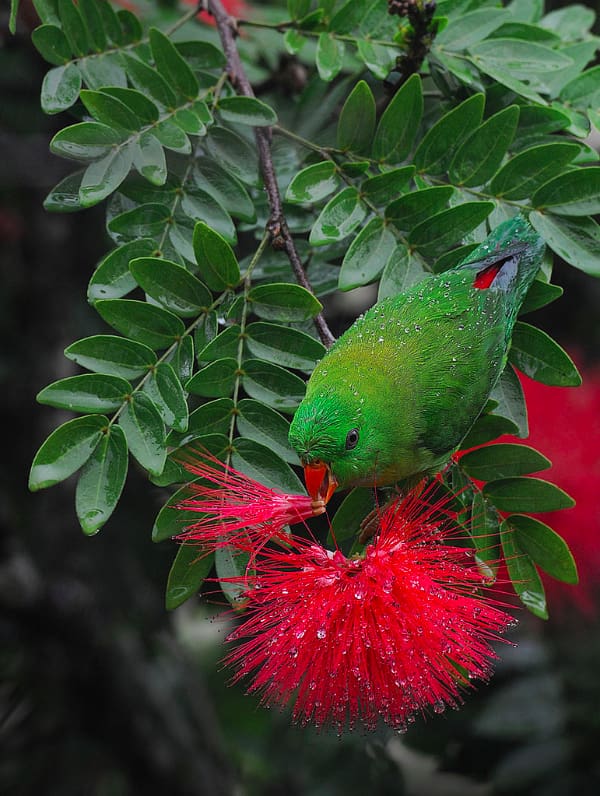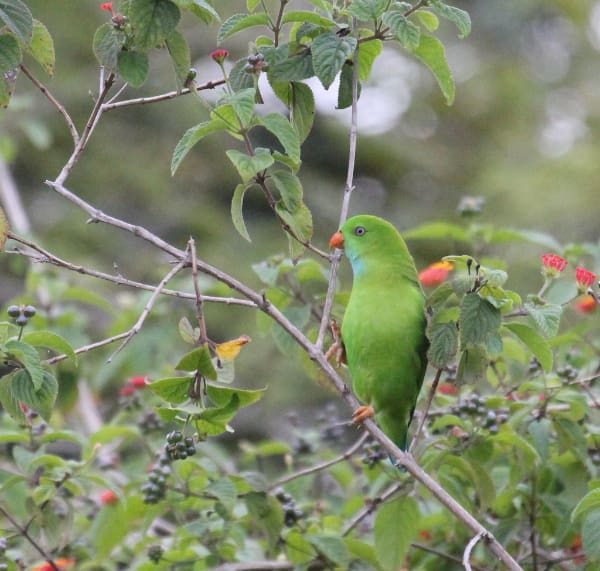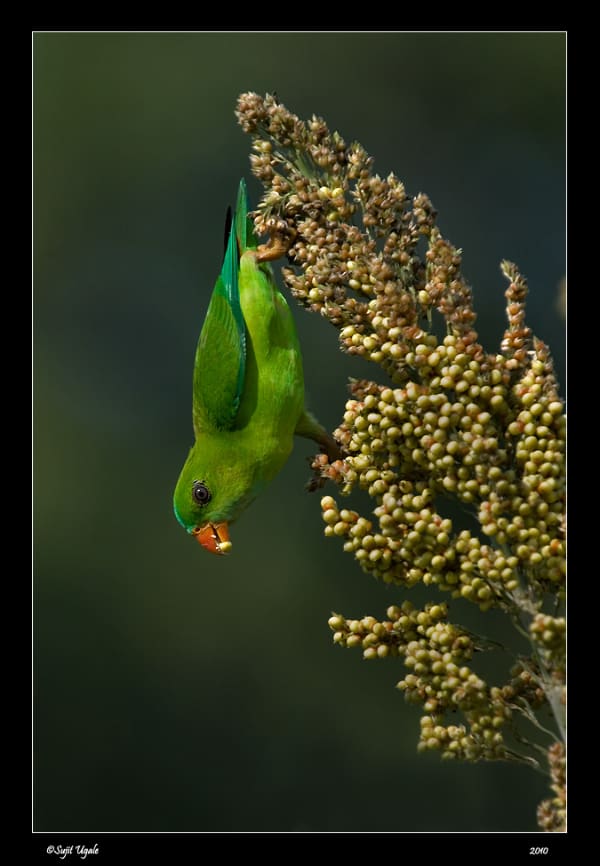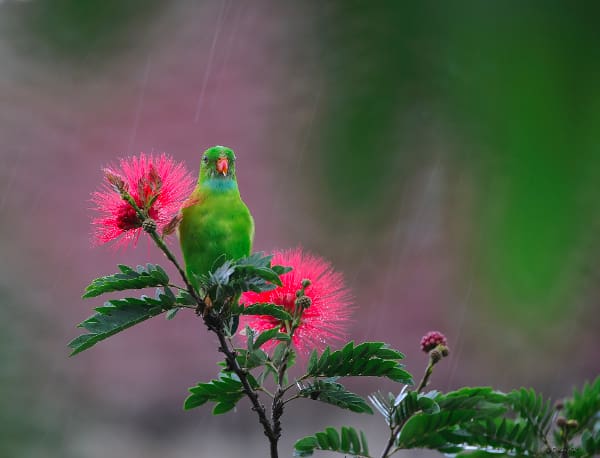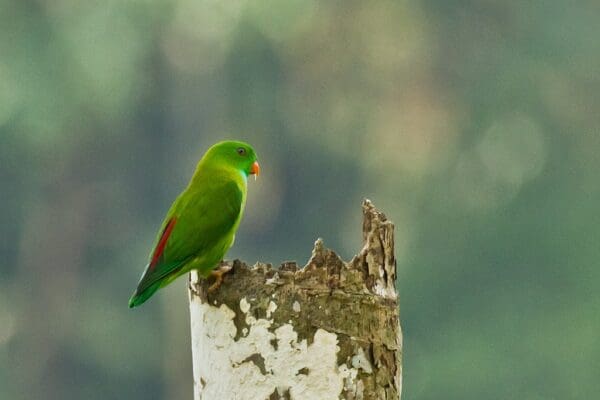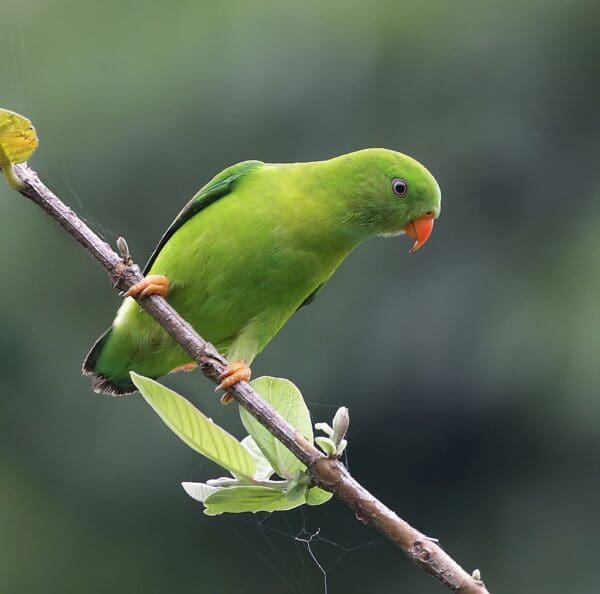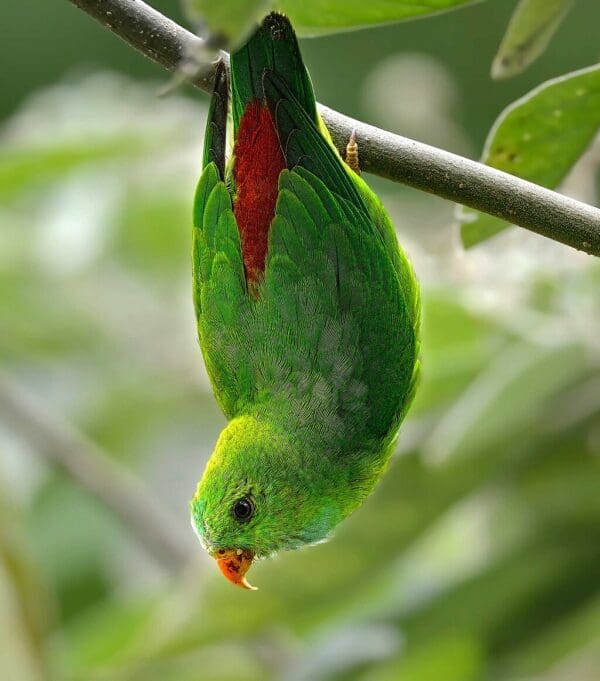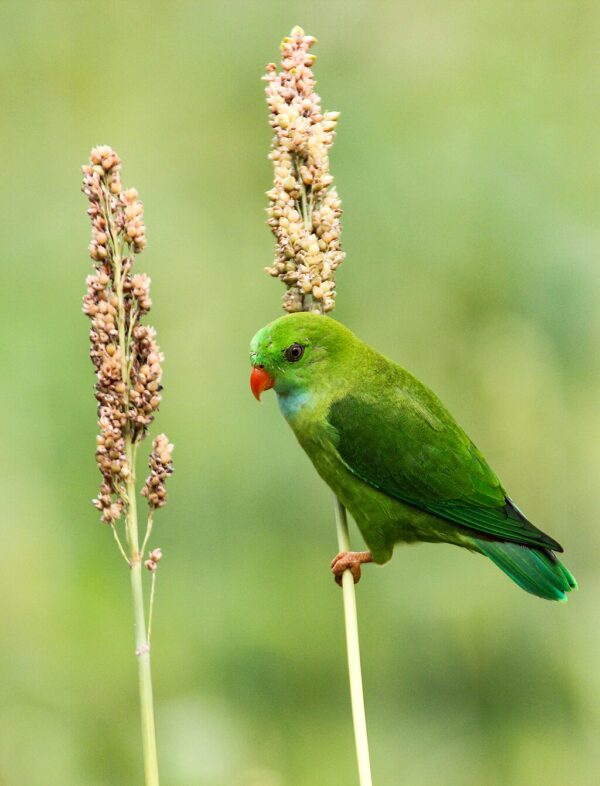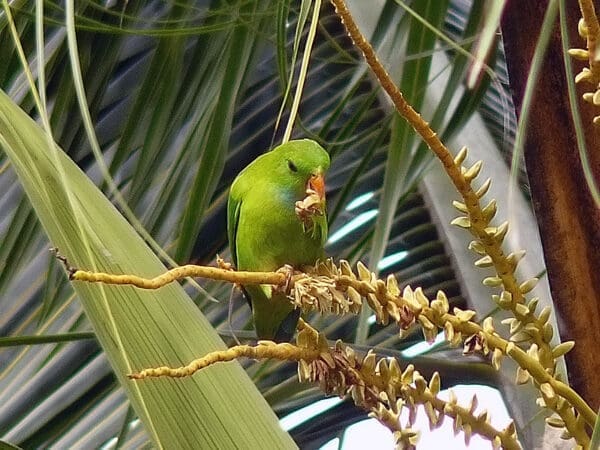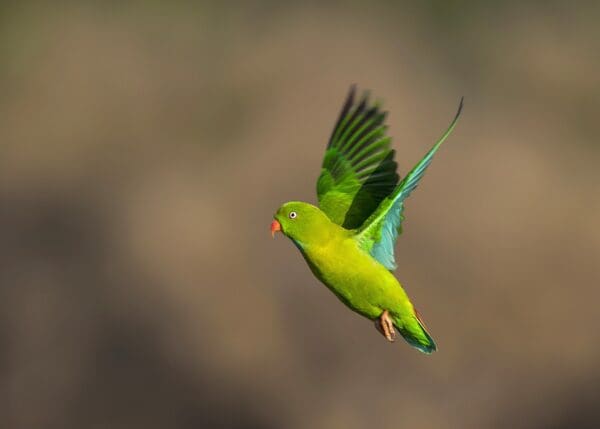Vernal Hanging Parrot
Also known as:
Green Hanging Parrot, Indian Hanging Parrot, Indian Lorikeet
Also known as:
Green Hanging Parrot, Indian Hanging Parrot, Indian Lorikeet
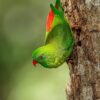
![© Melvin Yap [CC BY-NC-ND 2.0] via Flickr](https://parrots.org/wp-content/uploads/2023/01/wpt_Vernal-Hanging-Parrot_1162-18-100x100.jpg)
![© Jason Thompson [CC BY-SA 2.0] via Flickr](https://parrots.org/wp-content/uploads/2023/01/wpt_Vernal-Hanging-Parrot_1162-15-100x100.jpg)

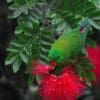
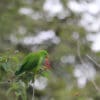

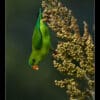

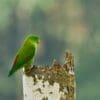
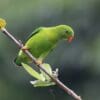
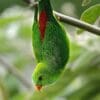
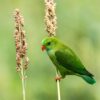
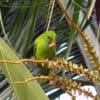
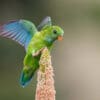
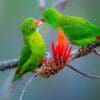
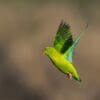
DID YOU KNOW?
Hanging parrots roost (rest) upside down high in the rainforest canopy.

Loriculus

vernalis
Size:
13 cm (5 in)
Weight:
28 g (1 oz)
Subspecies including nominate:
one
Colour Adult:
Male-small green parrot with blue patch on throat; red rump and uppertail coverts. Beak soft red. Eye white. Female-as in male but blue on throat minimal or absent.
Colour Juvenile:
As in adults but forehead and cheeks dull grey/green; blue on throat absent; rump dull red washed with green. Beak pale orange. Eye brown.
Call:
Squeaky and high-pitched in flight or at rest; also sharp and shrill notes. Feeding in silence with occasional soft chuckling.
More Information:
Content Sources:
CITES
BirdLife International
Cornell Lab of Ornithology/Birds of the World
A Guide to Parrots of the World, Juniper and Parr, 1998
Parrots of the World, Forshaw and Cooper, 1977.
Parrots of the World, Forshaw, 2006.
Parrots in Aviculture, Low, 1992.
Parrots: Their Care and Breeding, Low, 1986.
Captive Status:
Limited number in captivity.
Longevity:
—
Housing:
Outdoor secure aviary, minimum length 1.5 m (5 ft) with enclosed shelter for 1 or 2 pairs. A planted aviary is ideal, with cleaning of the plants a necessity.
Diet:
Fruits such as: apple and pear, cut into halves; also fruits in season such as pomegranate, guava and cactus fruits; berries such as blackberries and red currants; small seeds such as canary, and soaked oats; spray millet; sponge cake and nectar; insects such as mealworms, maggots and ant pupae, especially for feeding young.
Enrichment:
—
Nest Box Size:
106 cm (41.3″) long, 11 cm (4.3″) internal diameter, vertical box.
Clutch Size:
3 to 4
Fledging Age:
5 weeks
Hatch Weight:
—
Peak Weight:
—
Weaning Weight:
—
World Population:
Unknown but reported as extremely rare in China and generally common elsewhere. Decreasing.
IUCN Red List Status:
Least Concern
CITES Listing:
Appendix II
Threat Summary:
Not globally threatened. Very common on Andaman and Nicobar Islands and reasonably so in S Thailand. Was apparently common in Cambodia around 1930. Extremely rare in China. This species is considered to have a medium dependency on forest habitat and tree cover is estimated to have declined by 13.4% within its range over the past 10 years. Therefore, it is tentatively suspected that this may have led to a 1-19% decline in the species’ population over the same period.
Range:
SW India (peninsula) and up east coast to W Bengal and NE India, Bangladesh, to S China, and Indochina to Thailand. Also Andaman Islands and Mergui Archipelago.
Habitat:
Found up to 1800 m (5904 ft). Occurs in a variety of areas such as evergreen and deciduous forest, forest edge, clearings, secondary growth forest, brush, bamboo thickets, orchards and overgrown cultivated areas.
Wild Diet:
Forages on berries, figs (Ficus), flower nectar notably Erythrina, Eucalyptus, mistletoe and Salmalia malabarica; also seeds of Casuarina, Tectona grandis and bamboo. Can damage local crops of guavas (Psidium) and loquats (Eriobotrya japonica).
Ecology and Behaviour:
Not visually conspicuous, but not shy either; feeding is in canopy and very acrobatic in nature. Found in pairs, family parties or small flocks. Easily approached.
Clutch and Egg Size:
3 to 4 broadly ovate eggs, 19.0 x 16.0mm (0.7 x 0.6 in).
Breeding Season:
January-April. Nest is in hollow in rotten tree branch or stem.
Related Links:
—
